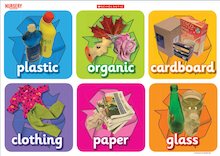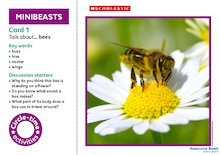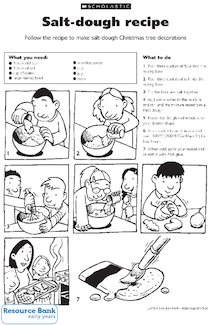Home Learning Daily Timetables
- Recommended
- Supports home learning
Add to My Folder
We have created a range of daily timetables to provide a clear and structured approach for the whole day, helping your children stay engaged and entertained from 9am–3.15pm.
With a focus on the core subjects of English and Maths, the timetables also include time for other curriculum learning, daily reading, breaks, snacks and daily exercise*. Of course, younger ages will require more parental support, but older children can be encouraged to work independently as the activities are designed for self-led learning as much as possible. We hope you find them helpful!
Our new daily timetables are now available to download for members of Scholastic Resource Bank. Not a member yet? Join today from just £15 and get unlimited access to our range of downloadable home learning resources for a full year.
* Remember not all days will go to plan and your child might not always be able to sit and work quietly for the allocated time. If needed, allow your child/children to pick and choose which activities they would like to do, or encourage them to focus on just one piece of learning per day.
Discover the full range of our daily timetables for children aged 3-11 using the links below.
Free Timetables
1. Monday Early Years
2. Monday Key Stage 1
3. Monday Lower Key Stage 2
4. Monday Upper Key Stage 2
Early Years
| Time: | Subject: | Notes: | ||||||||||
|---|---|---|---|---|---|---|---|---|---|---|---|---|
| 9.00-9.30 | PE |
Outcome/purpose: Continuous exercise for 30 minutes. Instructions: Make a list of different movements and decide which ones you want your child to focus on. Create an obstacle course that utilises your chosen movements; for example, crawling under a table, slithering across a sheet, stepping on and off a mat, walking along a piece of string or rope. You could also display these action station cards around the course to encourage your child to try different movements. | | 9.30-10.30 |
Maths |
Outcome/purpose: Learn about patterns and symmetry. Instructions: Download the Quick Practice – Patterns and Symmetry pack. Work through the pack with your child, explaining the instructions to them and providing demonstrations where needed. | | 10.30-11.00 |
Break |
Pop out for your daily walk or exercise – don’t forget to wash your hands! | | 11.00-11.30 |
Reading |
Outcome/purpose: To read for 30 minutes. Instructions: Snuggle up with a book! Let your child choose a story book and read it to them. After you have read the book, ask your child questions about the story. Such as: What was your favourite part of the story? Why? Who did you like the most in the story? Who did you like the least? Recreate the story with your child using puppets, toys or pictures. | | 11.30-12.30 |
Understanding the World |
Outcome/purpose: To raise your child’s awareness of the need to conserve resources and protect the environment. Instructions: Download the poster Sort and Recycle. Ask your child to point to objects on the poster that can be used to ‘put things in’ (e.g. boxes, bottles, jars etc.) and introduce the word ‘container’. Which would be the most suitable container for holding washing-up liquid or tea bags? Can your child explain why? Look at the cardboard boxes on the poster. Do you have any cardboard boxes in your recycling bin at home? Suggest recycling a selection of boxes in a different way – you can use them to create model buildings. (Activity based on Sort and Recycle – Activities) | | 12.30-1.30 |
Lunch | If you have a garden or balcony, try to get some fresh air after lunch. Don’t forget to wash your hands before eating! |
| 1.30-2.30 | Language and Communication |
Outcome/purpose: Your child can express themselves effectively and respond to ideas expressed by others in conversation or discussion. Instructions: Use these discussion cards to start a discussion with your child about insects. | | 2.30-3.15 |
Expressive Arts and Design |
To make salt-dough models.
*Instructions:*
With your child, follow this recipe to make "salt-dough":https://resource-bank.scholastic.co.uk/resources/410697.
Encourage your child to use their imagination to make different shapes and objects with the salt-dough.
_For example, they could make a model of their favourite animal or a character from a book they have read. (Or one of the insects you learned about earlier!)_
|
Published 14 April 2020
Reviews
You need to be signed in to place a review.



